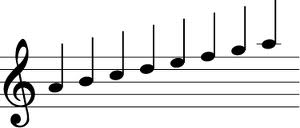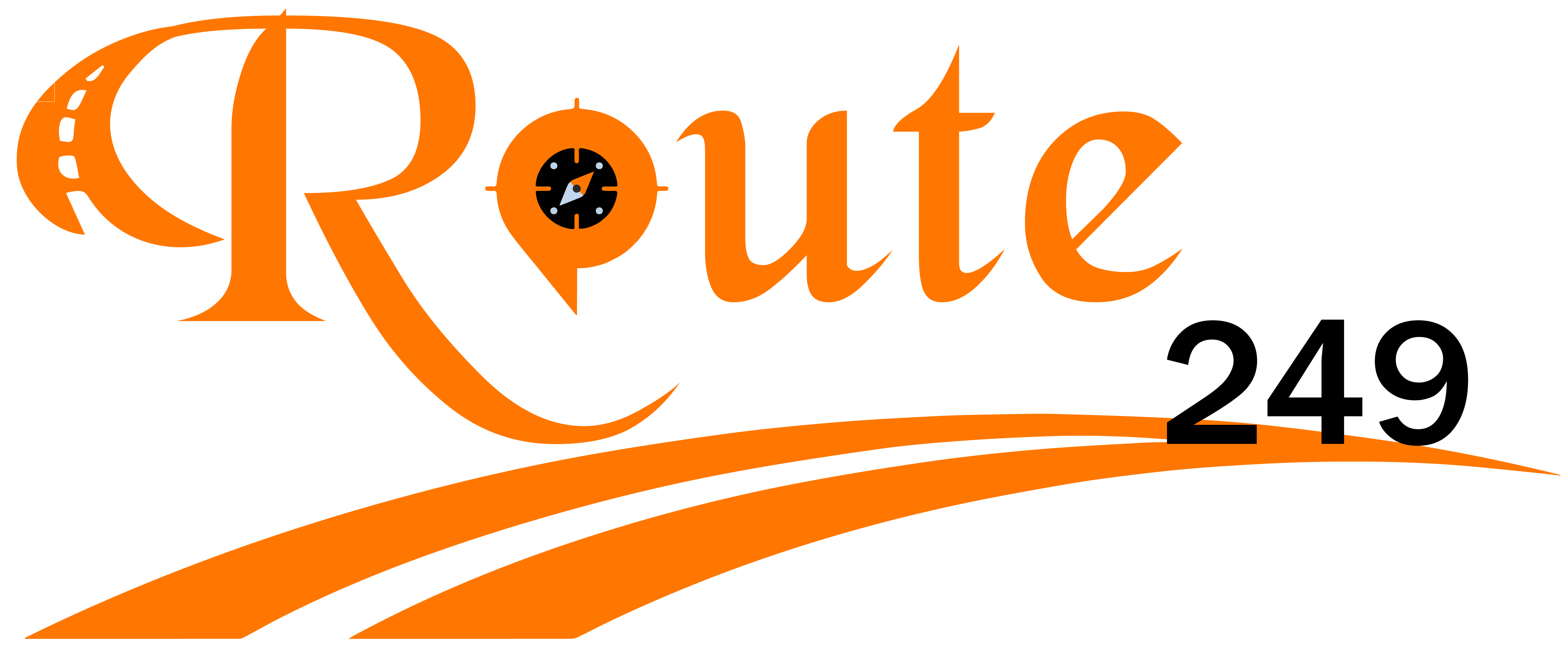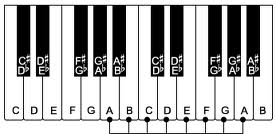Lesson 8
Minor Scales
The Natural Minor Scale:
There are other minor scales (i.e. Melodic Minor and Harmonic Minor), but for now, let’s just look at the Natural Minor scale.
 If we look at the A Minor Scale (which is what the two examples above are), they go from “A” to “A”. Notice that there are no sharps or flats in the scale. Armed with that knowledge, we can figure out what the steps are in the natural minor scale. I thought that I would do it this way so you could see it from a different angle. I could give you the answer, but you can figure it out. First, write out the notes from “A” to “A”.
If we look at the A Minor Scale (which is what the two examples above are), they go from “A” to “A”. Notice that there are no sharps or flats in the scale. Armed with that knowledge, we can figure out what the steps are in the natural minor scale. I thought that I would do it this way so you could see it from a different angle. I could give you the answer, but you can figure it out. First, write out the notes from “A” to “A”.
A – A# – B – C – C# – D – D# – E – F – F# – G – G# – A
Now, from “A” to “B” is what? It is a Whole step.
From “B” to “C” is what? It is a Half step.
From “C” to “D” is a Whole step.
“D” to “E” is a Whole step.
“E” to “F” is a Half step.
“F” to “G” is a Whole step.
“G” to “A” is a Whole step.
If you look at the right side of each column you will see the steps. The Natural Minor Scale is: Whole, Half, Whole, Whole, Half, Whole, Whole. Let’s apply this to another scale to see it in action. Let’s look at the key of “C”.
C – C# – D – D# – E – F – F# – G – G# – A – A# – B – C
“C” is the first note, a Whole step is “D”, a Half step is “D#”, a Whole step is “F”, a Whole step is “G”, a Half step is “G#”, a Whole step is “A#”, and a Whole step is again “C”.
If you see the example above, you can see that there are no sharps, only flats. But we had sharps. So who is right? I know that the steps are right. Oh and a “D#” is an “Eb”, a “G#” is an “Ab”, and a “C#” is a “Bb”, so that tells me that the steps I used are correct. But what’s going on?
Obviously I can’t teach you everything in one lesson or it would be so long that you would loose interest. So now I am going to give you another piece of the puzzle.
Every scale will include each of the letters: A – B – C – D – E – F – G.
The first example that I went through was: C – D – D# – F – G – G# – A#. This has two D’s and two G’s. That is not a proper Scale (according to Theory), so we cannot use sharps in the key of C Minor. Therefore we must use flats instead.
If you feel up to it, you should pick a minor scale and see if you can figure it out for yourself.
The Melodic Minor Scale:
Now we can look at some other minor scales. Let’s look at the Melodic Minor Scale. The steps for this scale is whole, half, whole, whole, whole, whole, half. If we look at the C Melodic Minor Scale it would be C – D – Eb – F – G – A – B – C. The E Melodic Minor Scale would be E – F# – G – A – B – C# – D# – E. Remember, you always have to have each of the letters, so I always start with the first letter and go from there. An example is the key of A. I would go A, B, C, D, E, F, G, & A, one of each letters. Now let’s go through the Melodic Minor Scale (whole, half, whole, whole, whole, whole, half), A – B – C – D – E – F# – G# – A. See, one of each letters and the sharps or flats fill in the gaps.
The Harmonic Minor Scale:
The harmonic Minor Scale’s steps are as follows: whole, half, whole, whole, half, 1-1/2 steps, & half. This one has the odd step and a half jump. If we look at the C Harmonic Minor Scale it goes as follows: C – D – Eb – F – G – Ab – B – C.
I hope that this explains the Minor Scales and helps you to better understand Scales as a whole.
This concludes Lesson 8. I hope you found it to be informative. You should review it and know it. Then go on to Lesson 9. I hope that you understand everything alright. If you have any questions, feel free to ask and I will try to explain it better.
Take Care,
mark









1 Comment
One thing I would totally love to learn is how to harmonize , with Vocals . My Vocals aren’t to bad . But truly want to learn how to harmonize